Stalisticallnference
Second fdition
Casella
George
Roger l. Berger
DUXBURY
ADVANC
ED
SERIE
S
�
01KONOMlKO
nANEniITHMIO
AeHNON
BIBAloeHKH
tao. ':fQ��
Ap. 5)q.:5
Inference
Ta�. qs
Statistical
Second Edition
George Casella
University
of Florida
Roger L. Berger
North Carolina
State
University
DUXBURY •
LEARNING
THOMSON
• Canada
Australia
• Mexico • Singapore
• Spain
• United Kingdom
• United States
�
DUXBURY
!
;
n-IOMSON LEARNING
t.('·;ti{:)·""';1 \:jl:'
• � to"� � t:. ¢ �� t
!
Sponsoring Edi1;" __ .. <�. /.: /
". L,.. ", ." ': . .'" v'"
... �. ; .. '
. , ............. �."'�
Cataloging-in-P
-:;;6tfcation
Library of Congress
Data
10 9 8 7 6 5 4 3 2 1
Printed
Casella,
George.
Statistical
inference
/ George Casella,
Roger L. Berger.-2nd
ed.
p. cm.
ISBN 0-534-24312-6
Includes bibliographical
1. Mathematical statistics. 2. Probabilities . I. Berger
II .. Title.
and indexes.
references
I Roger L.
QA216.C31 2001
519.5-dc21
2001025794
�
To A nne and Vicki
�
Duzbury titles 0/ related interest
Principles
of Research
Design and Analysis
for Applied Problem Solving
and Decision
Making
and Applications
2nd
2nd
2nd
Communication
for Data Analysts
Model
A Guide to Effective
Applied
the Linear
Statistics
Theory and Examples
Probability:
Theory and Application of
Applied Multivariate
Nonparametric
Consulting:
Daniel,
Derr, Statistical
Durrett,
Graybill,
Johnson,
Kuehl, Design of Experiments:
Larsen,
Lohr, Sampling:
Lunneborg,
Minh, Applied
Minitab Inc., MINITABTM
Myers, Classical
Probability
Models
Student
Marx, & Cooil, Statistics
Version
and Modern Regression
Methods
Statistical
Design and Analysis
Data Analysis by Resampling:
Concepts
Newton & Harvill,
Ramsey & Schafer, The Statistical
Stat Concepts: A Visual
Sleuth
12 for Windows
2nd
2nd
with Applications
Tour of Statistical
Ideas
Analysis
the Supply Chain
Survey Sampling
Discovery Software
Software for Microsojt®
Excel
Inc., JMP-IN: Statistical
SAS Institute
Savage, INSIGHT: Business
Scheaffer,
Shapiro,
Winston,
Mendenhall,
Modeling
Simu.lation
& Ott, Elementary
, .
Usin9..,(fRI�K
.... ...--...... .
''; .. ;",;....
your local Q,QQltstore
information contact Duxbury Pr�s.� 511 Forest Lod�(IWad, Pacific Grove, CA 93950,
d b ··IX,
,,/'(1'" i " J
.
:'!'*.\
orgo o:www. ux ury.com .'':il 'fI,.�i.'i}
... , ... " ...
;01
,.
\\'
" i
I
\", � .
;,� r.
or call 1�800-354-9706.
To order copies
Modeling
contact
For more
5th
·'
t
�
Preface to the Second Edition
Although
perhaps
Dead sentiment, "What a long, strange
Sir Arthur Conan Doyle is responsible
the best description
can be
of the life of this book
trip it's been."
for most
of the quotes
attributed
in this book,
to the Grateful
six years
with questions
started about
Plans for the second
the answers
struggled
passed,
clearer. We see tbe trend moving
rithmic
solutions of
importance
more important. But the manner
more complex
of mathematics
edition
about what to add and what to
as the flow of the discipline
away from elegant
and practical
indeed, we
in which they are applied
proofs of special cases to algo
cases. This does not
the
have found that these have
undermine
become
ago, and for a long time
delete.
Thankfully,
as time
of statistics
became
is changing.
and rigor;
clearer
became
For those familiar
with the first edition,
we can summarize
succinctly
we
has been greatly expanded
and simulation
the changes
into its own
(see Section
5.5 and
has
,
some material in
Chapters
3-11 for clarity.
with respect
to computer algebra
Appendix
Discussion of asymptotic
methods
on computing
); coverage
algebra
or added (for example,
bootstr
as follows.
chapter. There is more emphasis
the computer
been expanded
logistic
regression
and robust
We have de-emphasized
the more
and decision
specialized
and have restructured
First,
that we want to note.
theory,
There are two things
although
of the more applicable
techniques
); and there are many new Miscellanea and
Exercises.
the EM algorithm, p-values
apping,
theoretica
l topics,
such as equivari
ance
system
The first
are numbered
7.2.5 and Theorem
that facilitates
finding
who does not share that belief.
that they are becoming
we believe
programs,
tools,
increasingly
valuable
we did not want to force them on the instructor
Thus, the treatment
usive"
is "unobtr
in that it appears
only in an appendix,
with
some hints throughout
the book where it may be useful.
Second,
we have changed
things.
the numbering
to one
Now theorems,
lemmas,
for example,
together;
examples, and definitions
Definition
7.2.4 is
followed
precedes
10.1.3
10.1.4.
only minor changes. We reordered
some ma
have been split), added some new
Chapter
5 has also been re
back, and a new section
on
of invariance,
which was
reduced and
(mostly
and includes
minor editing
terial
examples
ordered
generating
in Chapters
Chapter
new exercises
on the EM algorithm.
by Example
four chapters
(in particular,
and exercises,
, witb the
random variables
7-9 of the first edition,
). Chapter
updating.
being moved further
The previous
has been
int.o
the addition
a new section
and updating,
only minor editing
and updated,
and did some general
7 has been
Chapter
the inequalities
6, which otherwise
8 has also received
and identities
convergence section
have received
has received
expanded
coverage
greatly
Example
added.
and
of
incorporated
�
-
'-f .-MIJIA\'¥ )""'111
,.....".,.-
,;,\�
\: '��s� ��e\\T" sjl��?'4 p-values. In Chapter
." I PREFACE TO THE SECOND EDITION
"guaranteeing
an interval"
was in Chapter
10 of the first edition
and small sections
and interval
(h8.vJn���hat
the rrrateihirihat
duced,
testing,
10 is entirely
Chapter
inference,
including
robust
strapping,
(which
and linear
regression
Unfortunately,
tion).
coverage
space reasons.
12 covers
on robust
material
After teaching
Chapter
and logistic
estimators,
score tests,
was covered
of randomized
regression
regression.
on loss function
what can be covered
possible
to cover the following
in one year:
9 we now put more emphasis
"pivoting
theory)
(decision
on pivot
the cdf"). Also,
was merely
ing
has been re
hypothesis
estimation
have been
new and attempts
of point
optimality
added to the appropriate
to layout the fundamentals
the delta method,
consistency
and asymptotic
estimation,
chapters.
of large sample
normality,
oneway ANOVA
in the first edi
for
new
and contains
boot
etc. Chapter
in two different
block designs
11 is classic
chapters
has been eliminated
with errors-in-
variables
from the first edition
in a one-year
for a number of years, we know (approximately)
course.
From the second
edition,
it should
be
Chapter
Chapter
Chapter
Chapter
Chapter
1: Sections
2: Sections
3: Sections
4: Sections
5: Sections
1-7 Chapter
1-3 Chapter
1-6 Chapter
1-7 Chapter
1-6 Chapter
6: Sections
7: Sections
8: Sections 1-3
9: Sections
10: Sections
1-3
1, 3, 4
1-3
1-3
that begin the course
with some probability
background
can cover more ma
Classes
terial
from the later
chapter
s.
Finally,
it is
almost
impossible
to thank all of the people
who have contributed
(and help us correct
and colleagues
in
in
who took the time to
the mistakes
A number
of people made
key suggestions
in presentation.
Sometimes
reviews.
these suggestions
Some were so long ago that
were just
may have forgotten, but we haven't. So thanks
to Arthur
Cohen,
Sir
changes
To all of our students,
a reality
friends,
we thank you.
some way to making the second edition
the first edition).
send us a note or an e-mail,
that led to substantial
short notes or comments,
their authors
David Cox, Steve Samuels,
Jay Beder, who has
knows the first edition
possibly
class,
comments
sent us numerous
better
and corrections
This book has seen a number of editors.
and some were longer
Rob Strawderman
who are sending
doing a
first suggested
mid-1990s
who constantly
responsible for
and marketed
encouraged
this book is our first editor,
the first edition.
John.
second
us. Perhaps
Thanks,
edition,
the one person
John Kimmel,
and Tom Wehrly. We also owe much to
over the years and
and suggestions
comments
than we do, and to Michael Perlman and his
even as we write this.
We thank Alex Kugashev,
who in the
and our editor,
Carolyn
Crockett,
(other
than us) who is most
who encouraged,
published,
George
Roger
Casella
L. Berger
�
Preface to the First Edition
a textbook, one (or
that you are writing
asked. The first is "Why are you writing
When someone discovers
tions will be
"How is your book different from
out there?"
a book because
to answer. You are writing
you are
available texts.
question
in a few sentences
question
only out of politenes
work.
doesn't
is
The first question
not entirely
to answer. The
answer
is fairly
easy
satisfied
with the
can't be put
(who may be asking
the
quick and witty.
so, in order not to bore your
audience
to say something
both) of two ques
s), you try
The second
is harder
what's
a book?" and the second
It usually
to build theoretical
statistics
(as different from
mathe
The purpo
se of
this book is
from the first principl
themes, et
c., evolve
matical
statistics)
proofs, ideas,
the basics
niques,
consequences
how well it would work. The final judgment
reader.
of probability,
and concepts
definitions,
of previous
that are statistica
When this
we develop the
concepts.
through
es of probability
theory.
arguments.
Logical
development,
Thus, starting
of statistical
inference
statistical
theory
using tech
from
l and are natural
endeavor was
started,
of our success is,
of course,
we were not sure
left to the
extensions
and
The book is intended
a field where a statistics
calculus.
essential
course
(Some familiarity
.) The book
in statistics.
for first-year
graduate
concentration
majoring
students
is desirable.
manipulati
or in
is one year of
The prerequisite
ons would be useful, but is not
introductory
in statistics
can be used for a two-semester, or three-quarter,
with matrix
The first
four chapters cover basics
that are later necessary.
many fun
of probability theory
and introduce
al chapters.
and can be the starting
statistic
and statistics)
Chapters
probability
5 and 6 are the first
5 is transitional
(between
in statistical
for students
theory
detailing three
with some probabilit
princip
how these principles
are important
les (sufficiency,
in modeling
statistical
y backgrou
nd.
like
) and showing
unique,
will cover this chapter in
some time here. In particular,
them, are fundamental
Along with the sufficiency
to total
the central core
detail,
although
the likelihood
principle,
statistical
of statistical
inference,
we strongly
and invariance
principles
these principl
es, and the
understanding.
estimation
(point
recom
7-9 represent
) and hypothesis
Chapters
and interval
into methods
of finding
these techniques.
appropriate
and evaluating
Finding
testing. A major
statistical
feature of these chapters
techniques
and methods
is the division
of evaluating
are of interest
to both the
theorist and
the
damentals
Chapter
point for a course
6 is somewhat
Chapter
lihood, and invariance
data. Not all instructors
mend spending
are treated
thinking
in detail.
behind
�
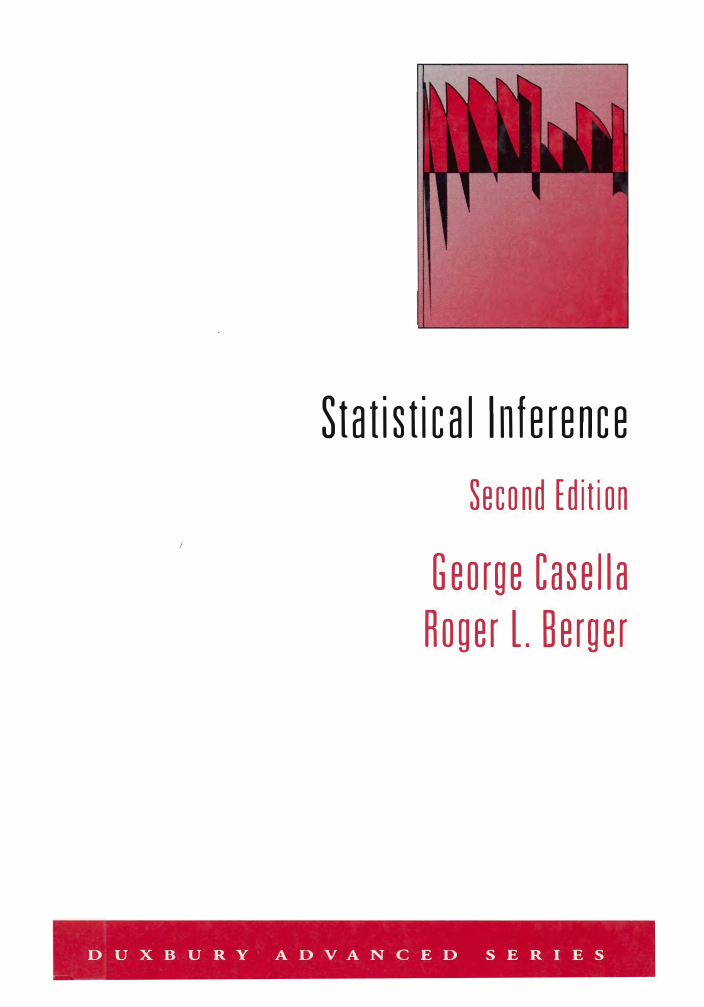
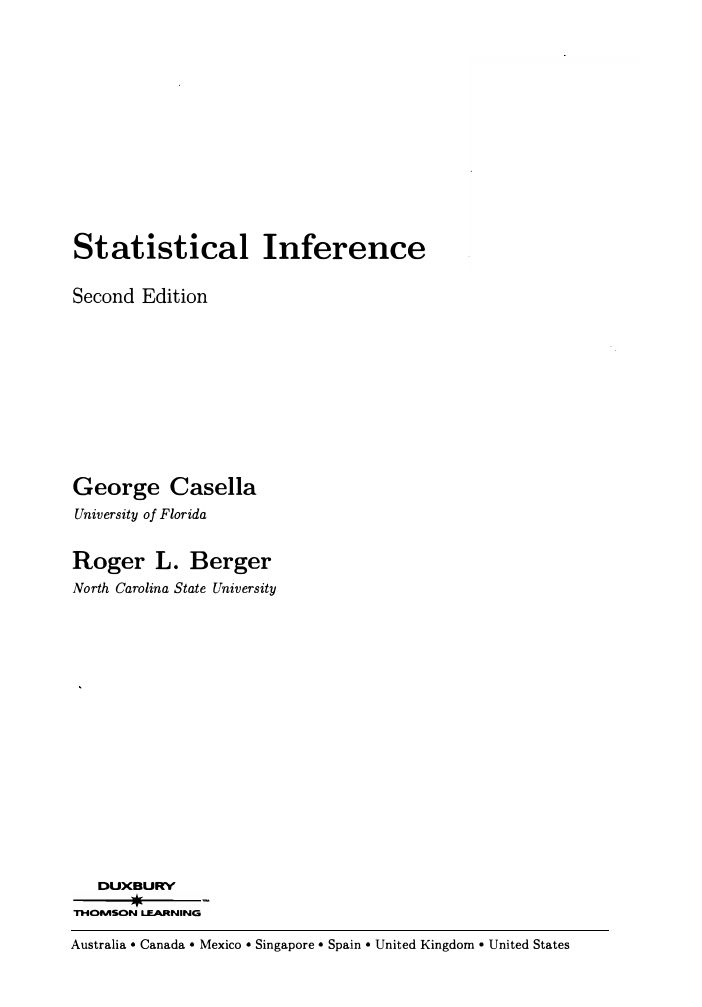
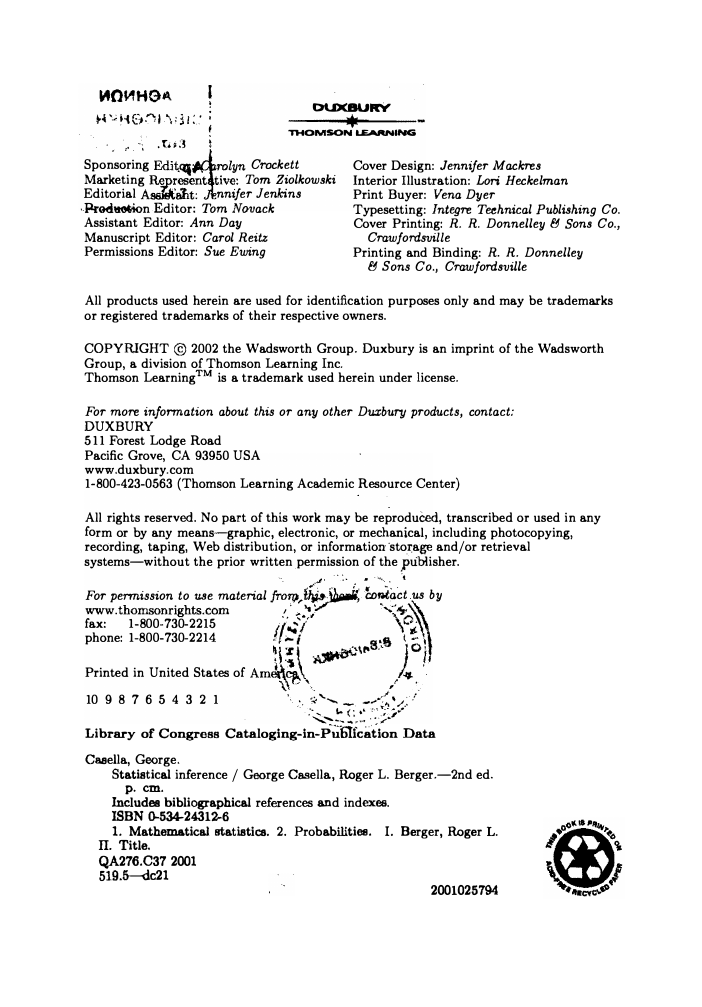

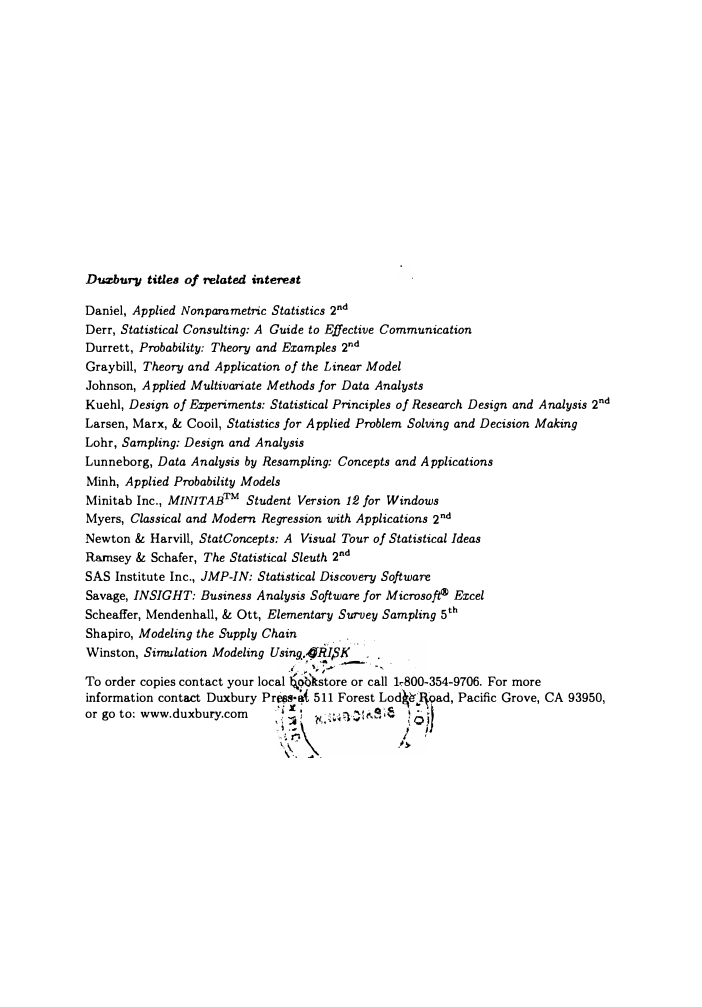
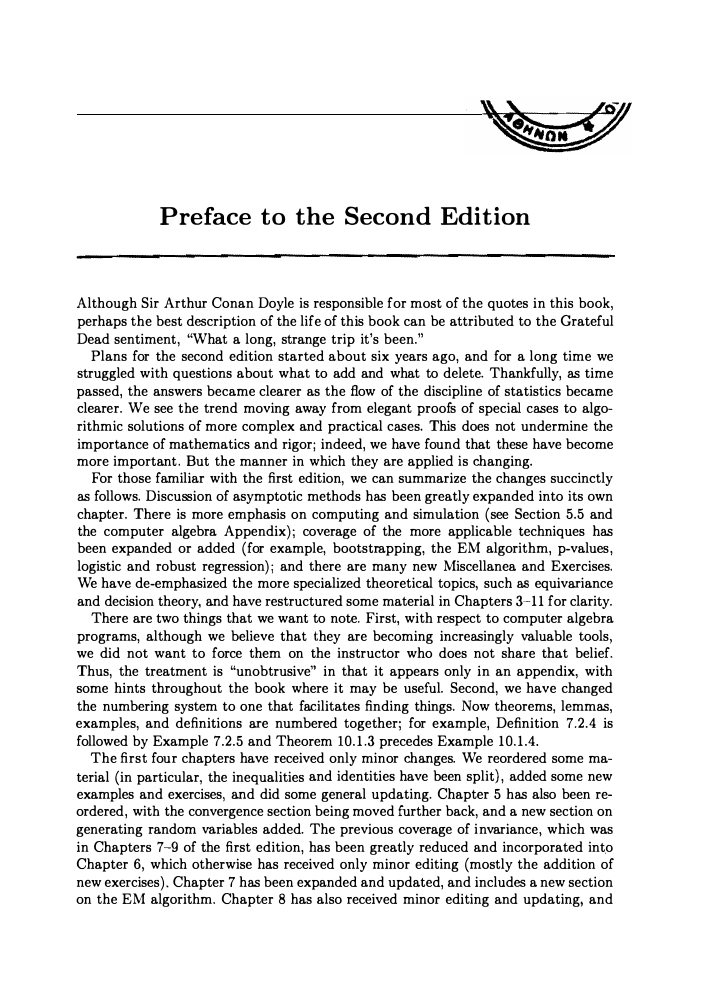
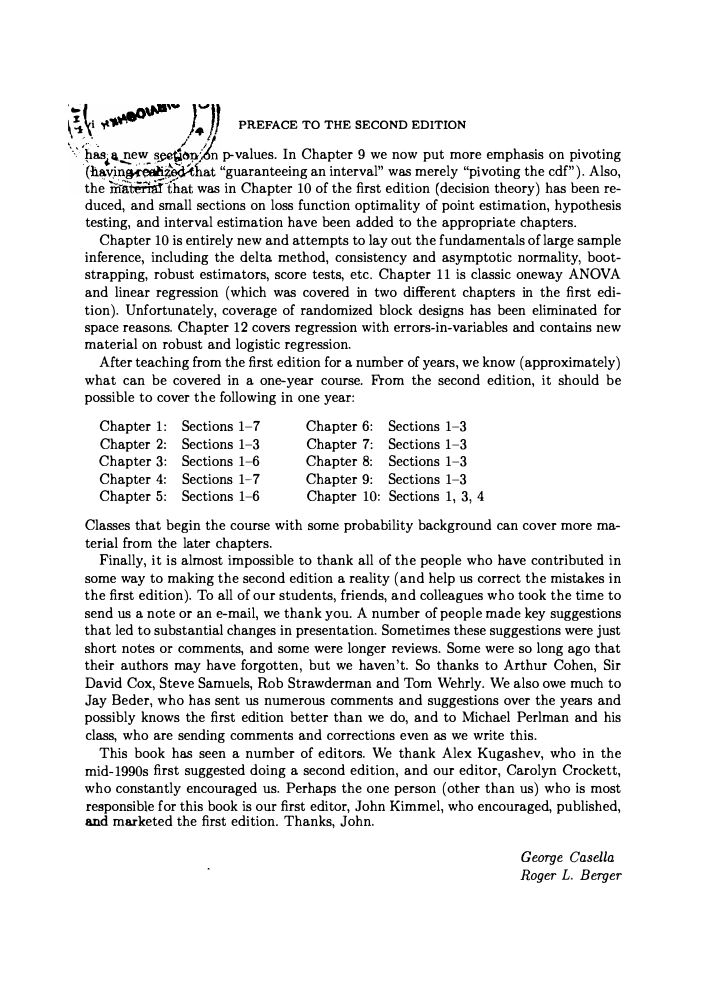
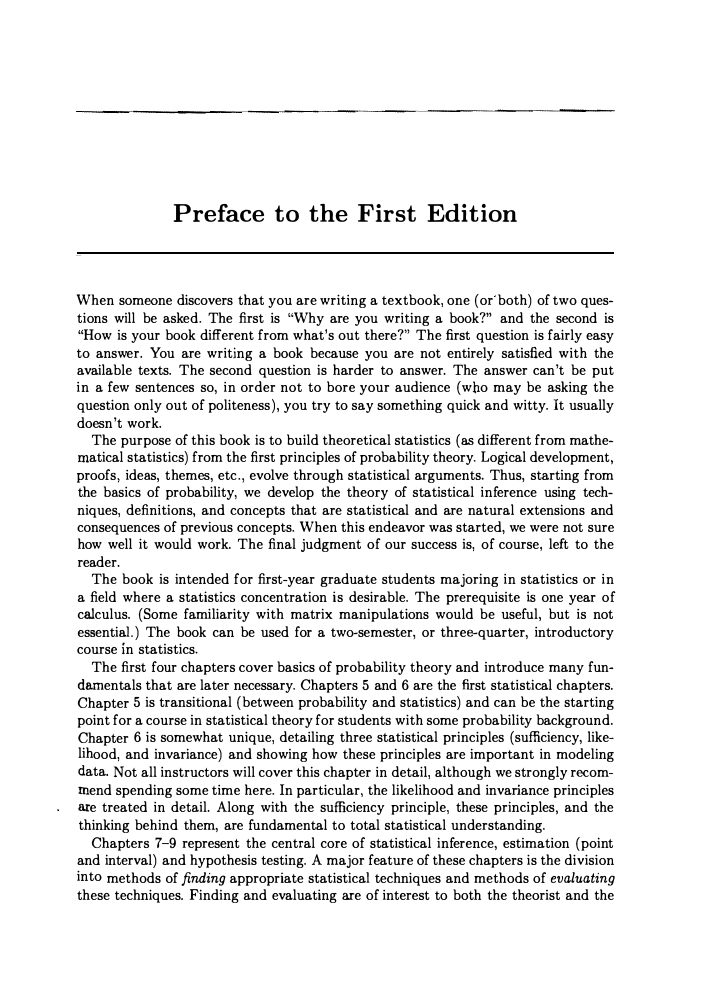








 2023年江西萍乡中考道德与法治真题及答案.doc
2023年江西萍乡中考道德与法治真题及答案.doc 2012年重庆南川中考生物真题及答案.doc
2012年重庆南川中考生物真题及答案.doc 2013年江西师范大学地理学综合及文艺理论基础考研真题.doc
2013年江西师范大学地理学综合及文艺理论基础考研真题.doc 2020年四川甘孜小升初语文真题及答案I卷.doc
2020年四川甘孜小升初语文真题及答案I卷.doc 2020年注册岩土工程师专业基础考试真题及答案.doc
2020年注册岩土工程师专业基础考试真题及答案.doc 2023-2024学年福建省厦门市九年级上学期数学月考试题及答案.doc
2023-2024学年福建省厦门市九年级上学期数学月考试题及答案.doc 2021-2022学年辽宁省沈阳市大东区九年级上学期语文期末试题及答案.doc
2021-2022学年辽宁省沈阳市大东区九年级上学期语文期末试题及答案.doc 2022-2023学年北京东城区初三第一学期物理期末试卷及答案.doc
2022-2023学年北京东城区初三第一学期物理期末试卷及答案.doc 2018上半年江西教师资格初中地理学科知识与教学能力真题及答案.doc
2018上半年江西教师资格初中地理学科知识与教学能力真题及答案.doc 2012年河北国家公务员申论考试真题及答案-省级.doc
2012年河北国家公务员申论考试真题及答案-省级.doc 2020-2021学年江苏省扬州市江都区邵樊片九年级上学期数学第一次质量检测试题及答案.doc
2020-2021学年江苏省扬州市江都区邵樊片九年级上学期数学第一次质量检测试题及答案.doc 2022下半年黑龙江教师资格证中学综合素质真题及答案.doc
2022下半年黑龙江教师资格证中学综合素质真题及答案.doc